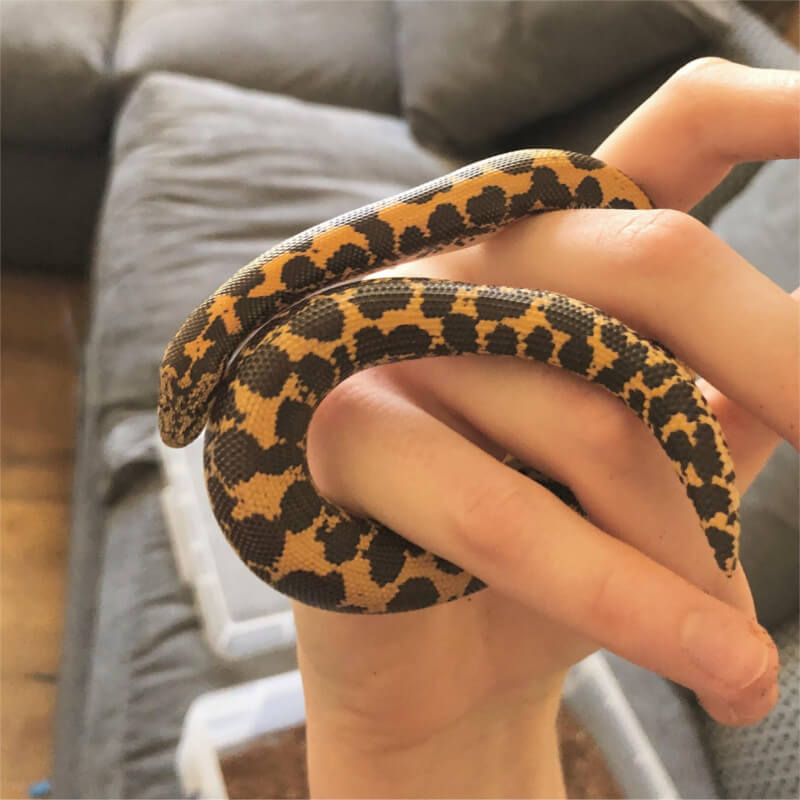
Kenyan Sand Boa Care Guide
- This topic has 0 replies, 1 voice, and was last updated 5 years, 8 months ago by
CritterDepot.
-
AuthorPosts 1 Favorite
-
-
October 20, 2019 at 9:09 am #2351
CritterDepotKeymaster
Kenyan Sand Boa Care Guide
There are a lot of reasons why Kenyan Sand Boas are gaining popularity in the herp community. Females will only grow as long as 2 feet in length, and males will grow slightly smaller, making them a very manageable size for new owners. They are very docile, and usually prefer handling no more than once per week. So they aren’t great cuddlers. But they will live up to 25 years if they are properly cared for. And one of their best features is their beautiful pattern.
Here’s an in-depth Kenyan Sand Boa care guide that discusses:
- habitat design and set up
- feeding schedule
- sanitation schedule
Habitat Design
It’s important to mindful that Kenyan Sand Boas can get stressed out if offered too much space. For younger boas, a 10 gallon tank is a good size. Line the bottom with aspen shavings, and offer a hide, as well as basking spot. Any of these heating pads will create a nice basking spot.
Once they get larger, you’ll want to upgrade a 20 gallon container with the same furnishings. And if you’re caring for 2 kenyan sand boas, then a 30 gallon tank will be idea.
Feeding Schedule
You can offer both live and frozen prey for kenyan sand boas. If offering live prey, make sure it is being offered while the snake is alert and active. This will require the keeper to know his/her snake’s activity schedule. This activity schedule will change seasonally. So don’t be a passive owner.
If offering frozen prey, the food will need to be dangled to stimulate the kenyan sand boa into striking.
Most kenyan sand boas will only need to be fed mice, due to their size. Young boas will live off pinkies, then graduate to fuzzies, then hoppers as they got older. It is very rare that a kenyan sand boa will eat a rat. Rats are simply too large for them. And if fed a meal too large, they can suffer from injuries, seizures, and partial paralysis.
Sanitation Schedule
It’s important to have a routine cleaning schedule for your kenyan sand boa’s habitat. If their habitat gets neglected, they can suffer from blister disease, respiratory infections, and fungal infections. If your kenyan sand boa suffers from any of these, it’s critical to see an exotic vet near you right away.
Daily cleaning – everyday, owners should be spot cleaning feces.
Weekly cleaning – owners should be replacing the tap portion of the bedding. After a week, the bedding will have absorbed enough urine and feces that it will need replaced.
Bi-weekly cleaning – All dishwasher safe furniture should be placed in a dish washer.
Monthly cleaning – This will be a deep clean. And you will need a separate container for your kenyan sand boa. Use a plastic tuberware container, and make sure it’s offered the necessary heating requirements to keep your boa safe.
Throw away all the bedding material, and empty out the tank. Use a 10% bleach solution, and clean all the sides and bottom of the tank. Allow adequate time to dry, and then wipe the sides down with vinegar. Again, allow adequate time to thoroughly dry, and apply new bedding material. It’s important to use both bleach and vinegar in separate applications to ensure all bacteria, funguses, and viruses are killed.
Happy Herping!
Login/Register To ReplyAttachments:
-
-
AuthorPosts
(adsbygoogle = window.adsbygoogle || []).push({});

